Thompson, His Life and Locomotives is Tim Hillier-Graves’ third volume about the London and North Eastern Railway’s Chief Mechanical Engineers, following his previous studies of Sir Nigel Gresley and Arthur Peppercorn, and provides an immensely readable biography of Sir Nigel Gresley’s successor, Edward Thompson..
Published by Pen and Sword in January 2021, this hardback book measures around 28.19 cm x 21.59 cm, has 288 pages and 250 colour and black and white illustrations and locomotive weight diagrams. It has a published price of £35, and at the time of writing, it can be obtained online from Amazon for £24.52.
With nine chapters, the book must have been a challenge to write as Thompson was very sparing in committing words to paper, and accounts of his life concentrate mainly on locomotive design and construction.
Chapter 1 “Birth Right” covers his school days at Marlborough College before going on to study mechanical science at Pembroke College in Cambridge. After graduating, he gained practical experience with the Lancashire and Yorkshire Railway at its Horwich Works before joining Beyer Peacock in Manchester.
Returning to the railway, Thompson spent time at the Midland Railway’s Derby Works before gaining further experience at the Royal Ordnance Factory at Woolwich until he was appointed Assistant Locomotive Superintendent on the North Eastern Railway at Gateshead.
Chapter 3 “The Bleakest War” is a very interesting description of how Thomson’s career progression was interrupted by World War I, where he saw service on the Western Front, was twice mentioned in despatches and used his locomotive engineering skills to keep supplies moving to the front line.
After the war, Thompson returned to the Great Northern Railway at Doncaster where he took a keen interest in all matters relating to railways and captured many images for his photograph albums. This time in his career is described in Chapter 4 “A Difficult Peace”, after which in 1927 he transferred to Stratford Works on the Great Eastern Railway which is described in Chapter 5 “Waiting in the Wings”. Six years later he was appointed Chief Mechanical Engineer of the North-Eastern Area of the London and North Eastern Railway before transferring to Doncaster in 1938 to take up the same post for the company’s Southern Area.
Soon afterwards, Thompson’s wife died as described in Chapter 6 “A Troubled Time”, which resulted in him compensating for her loss by immersing himself more and more in his work, until in 1941 Sir Nigel Gresley unexpectedly died without an obvious successor. The London and North Eastern Railway board were going to appoint Arthur Peppercorn as Gresley’s replacement, but as described in Chapter 7, “To be the Leader”, Thompson held seniority amongst other eligible officials, and used his political experience to sidestep Peppercorn and take the title of Chief Mechanical Engineer.
Thompson’s appointment as Chief Mechanical Engineer was to an extent overshadowed by World War, II but the war’s demands led him to introduce a number of new designs that are explained in great detail in Chapter 8 “Design Ambitions”.
Thompson was honoured when the first of his Class A2/3 Pacifics bore his name, as seen on the left below. Numbered 500, it was the 2,000th locomotive to be built at the Great Northern Railway’s Doncaster Works. On the right is one of his B1 Class, which was his most-successful design with 410 examples being built.
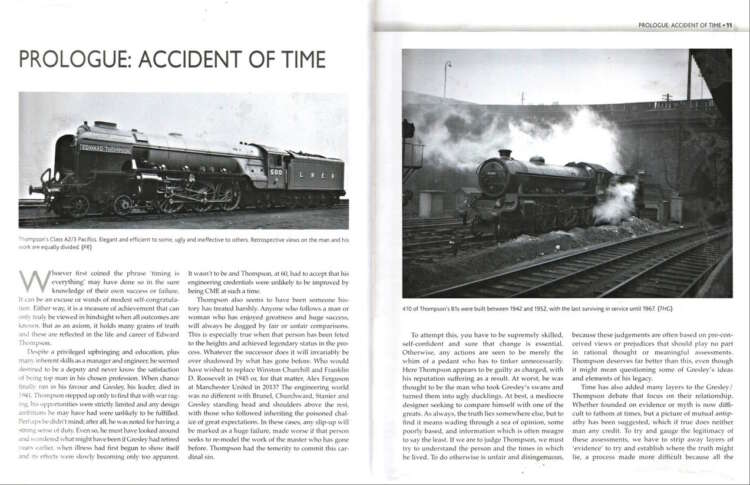
In Chapter 4, the author describes Thomspon’s time on the Western Front, and the conditions he faced in maintaining and constructing railways across a churned-up wasteland. They cannot be illustrated more dramatically than the photograph on the left below. The photo on the right is another one from Thompson’s collection and shows a rail-mounted portable generator used by the ROD.
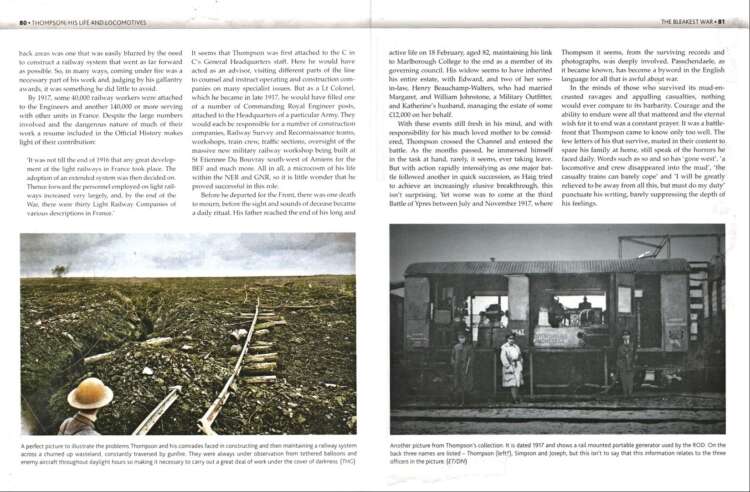
Whenever the opportunity arose, Thompson rode on the footplate and made a number of appearances on some of the London and North Eastern Railway’s highest-profile trains, including the prestigious “Flying Scotsman” seen at the top-right below leaving King’s Cross being hauled by a new Class A3 number 2596 Manna, which after Nationalisation was renumbered 60085.
This photo is one of the many that Thompson kept in his albums of the period, and his deep interest in anything connected with railways extended to him recording details of the train’s journeys on the back of some of the photographs. Another photograph he kept was the one at the bottom showing Manna’s sister locomotive, No. 2544 Lemberg.
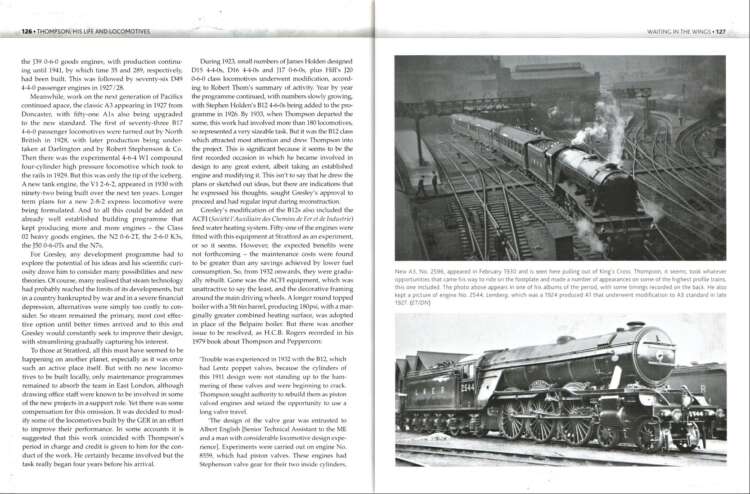
Below are two more extracts from Thompson’s albums showing examples of rebuilding work carried out at Stratford under Thompson’s leadership, although the extent of Thompson’s involvement in this work is far from clear.
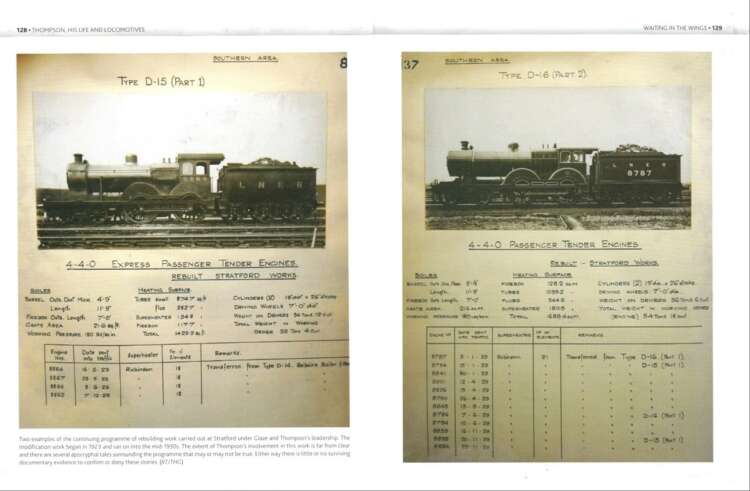
In 1942 Thompson’s design for a mixed-traffic locomotive with a 4-6-0 wheel arrangement was approved, becoming the B1 Class of which over 400 examples were built. The photos below show the first of the class, named Springbok, which, along with 39 others, was named after different types of antelope, supposedly as a mark of respect for the South African Prime Minister, Jan Smuts, who was a member of Churchill’s War Cabinet, and the large contingent of South African soldiers who fought in the First and Second World Wars. It was somewhat ironic that among the engines whose future were threatened by the introduction of his B1s were those that Thompson admired the most, the engines designed by his Father-in-Law, the North Eastern Railway’s Vincent Raven.
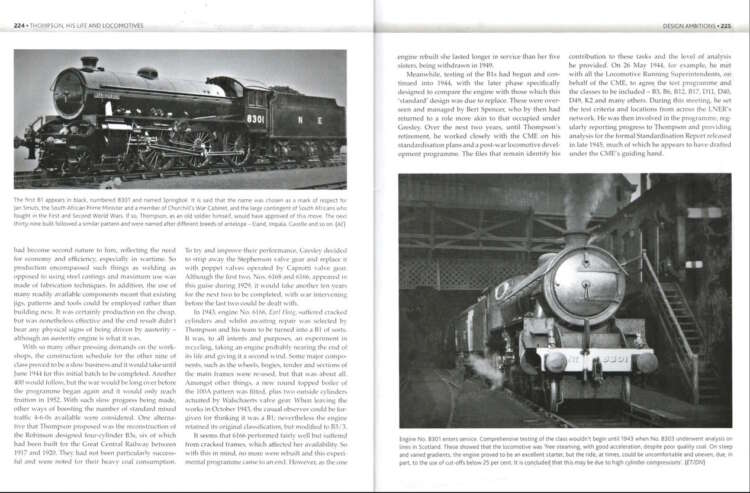
The left-hand page below shows two examples of Thompson’s experiments with rebuilding, with the top illustration illustrating his design for rebuilding a K3 Class as a K5, and below it his design for rebuilding a B2 Class as a B17. In 1946 the London and North Eastern Railway published the five-year plan, seen on the right below, to restore the railway after six years of wartime use. It published a booklet outlining these plans and reproduced verbatim Thompson’s ideas as seen at the bottom-right.
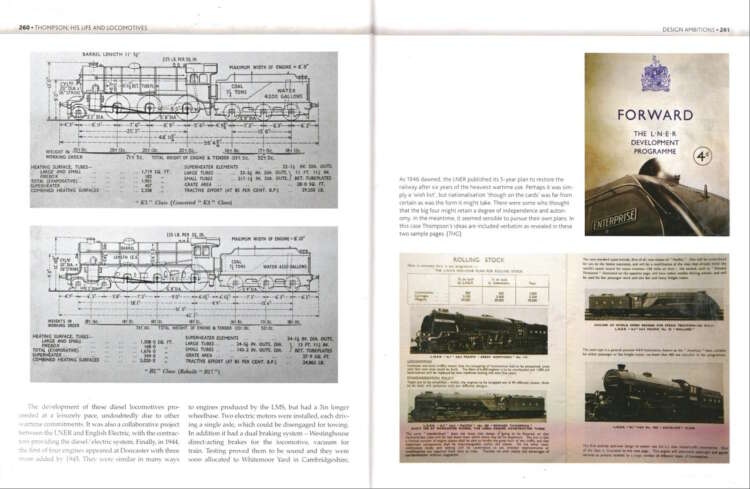
The illustration on the left shows the outline diagram and dimensions for Thomson’s swansong, which was the A2/3 Class, which had its roots in a proposal to build 30 new standard locomotives. As he was due to retire in June 1945 it was hoped that the first of the class could be completed by then, which it duly was on 24th May 1945. It was the 2,000th locomotive to be built at the Doncaster Works and the bottom photo below shows it steaming up and down the work’s yard as number 500, but soon after it was named Edward Thompson in his honour. It was reported at the time that Thompson briefly drove the locomotive during its launch. The top-right photo shows the boiler of the second of the class, later to be named Airborne, being lifted into its frames.
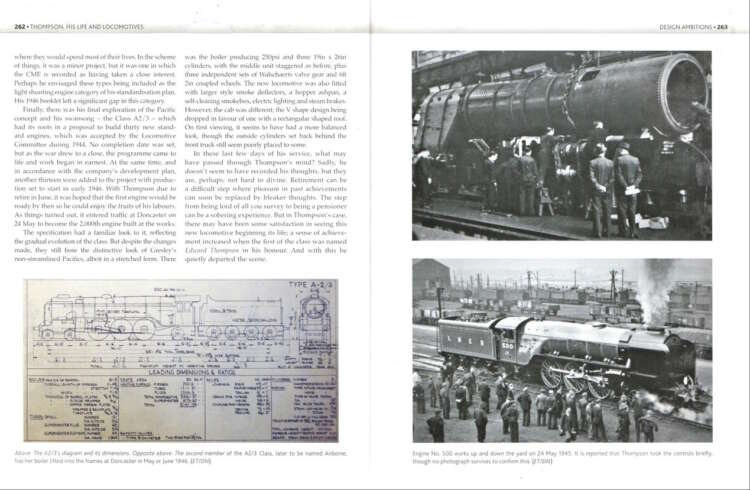
The book is available to purchase from Amazon and from Pen & Sword.
We would like to thank Pen & Sword for providing RailAdvent with a copy of the book for review.






Responses